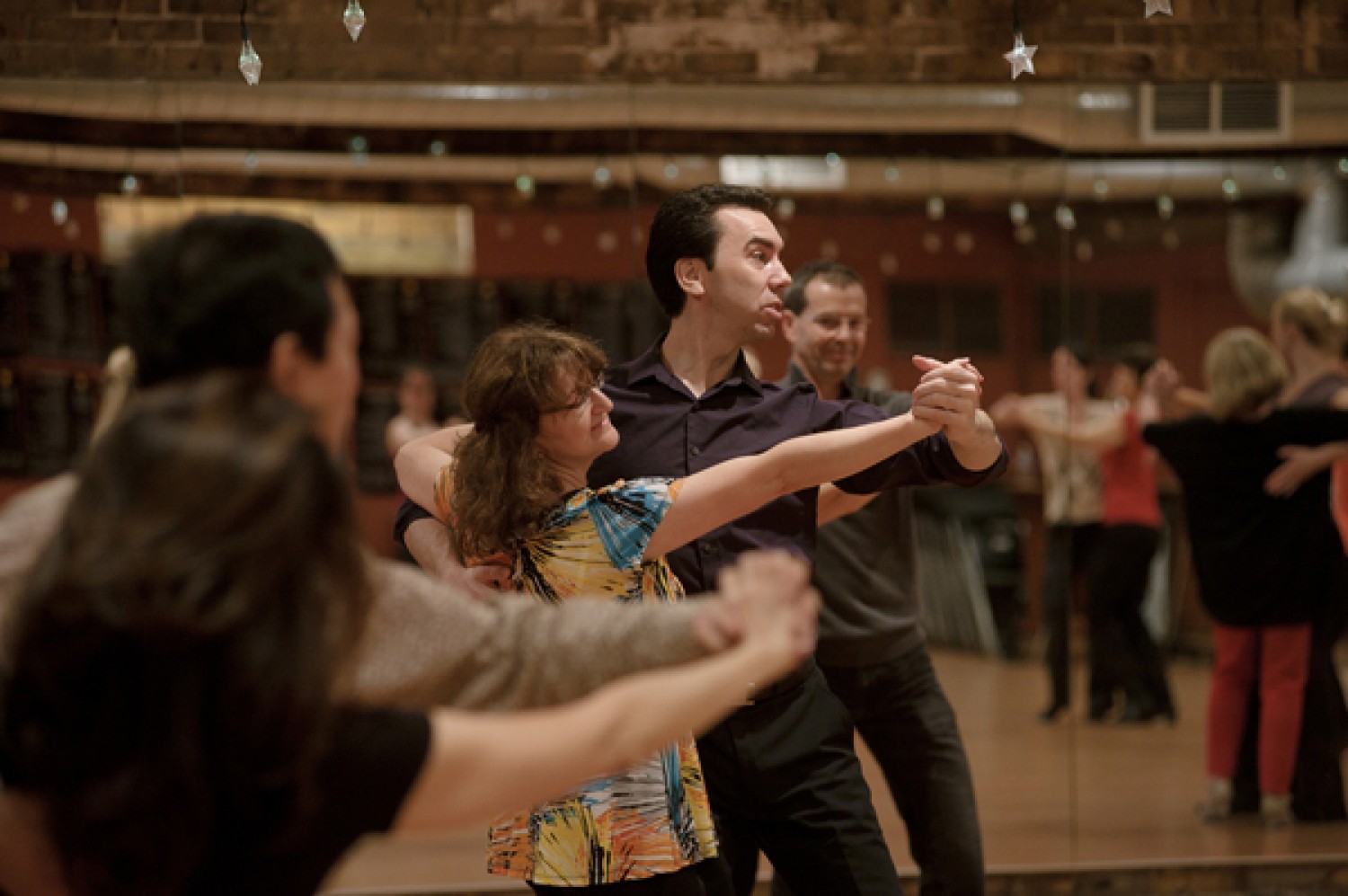The Art of Partnered Pivots

Now that you’re a seasoned pro with solo pivots (wink), it’s time to explore pivots we make while connected with a partner. Although partnered pivots follow many of the same rules as solo pivots, there are a couple crucial differences worth mentioning.
- You are connected with your partner through the turn, meaning you need to work together to make it around.
- Your ‘pivots’ aren’t always pivots in the truest sense. Pivots beginning with a step forward end with the back leg moving slightly to the side, creating space for your partner to step through.
Keeping the above differences in mind, here’s the key strategies that ensure you’ll nail those pesky pivots – every time.
The Leader is the Partner Who Steps Forward
As we mentioned earlier, you and your partner must work together to propel yourself through the turn. That means (gasp!) that both the leader and follower must take turns initiating the pivot when they step forward. Don’t go crazy though – the tempo stays the same, and you should both still be in sync with each other.
Be a Human Top
Remember when you and your best friend used to hold hands and run around in a circle to create this feeling of flying? We recreate this weightless feeling by stepping close to our partner’s legs, while stretching away at the top. Your partner will counterbalance you, letting your weight sink into each other’s arms.
A warning: If you forget and lean inwards during the pivot, it can cause your legs to fly out instead of your torso! This is a problem, both for you and those around you.
Step Through the Middle
The reason why the forward pivot ends with a side step is because it creates a gap between the legs for you to step through. You must step between your partner’s legs to make it around the turn. If you don’t, you’re partner will block you and knock you off balance.
Stay on Your Side!
Finally, it’s important to remember you are offset to the left of your partner – this gets them partly out of your way and makes it easier to step between their legs. Especially on the forward pivot, make sure you aim for left-of-centre on your partner’s torso, or you’ll bowl them over instead of pivoting past them.
These strategies give you the power, balance, and stability you need to execute partnered pivots with panache. Have fun trying them out!
About the Author
Ian Crewe has been dancing ballroom for over 18 years, and has a Licentiate in American smooth and rhythm. His passion for dance eventually led him to blogging and the World Wide Web. Ian currently teaches at the Joy of Dance Centre, Toronto, ON, Canada.

